Lifestyle
Kashmiri Walnut Wood Carving
By - kashmir images
27 October, 2022
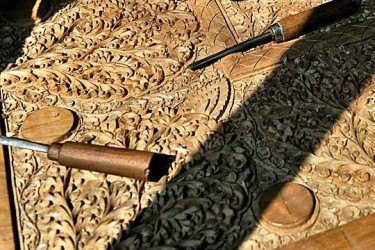
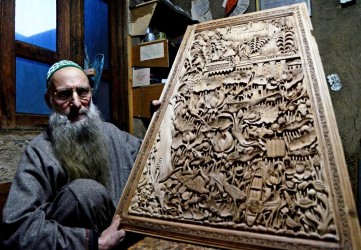
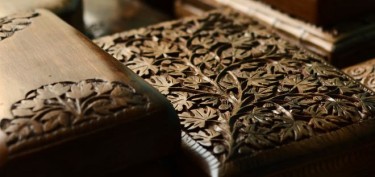
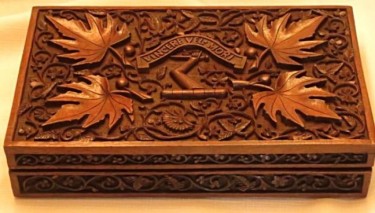
Kashmir, the paradise on earth, refers to the region's breathtaking natural beauty and traditional handicrafts. Along with many other types of art, Kashmir is renowned for its unique wood carving technique.
One of Kashmir's most significant crafts is carving on walnut wood. With an elevation of 5500–7500 feet above sea level, Kashmir is one of the key locations where walnuts grow. The wood is sturdy and robust, and delicate and intricate work is made easier by the wood's close grain and uniform texture. Additionally, artistic effects are visible easily on its polished surface.
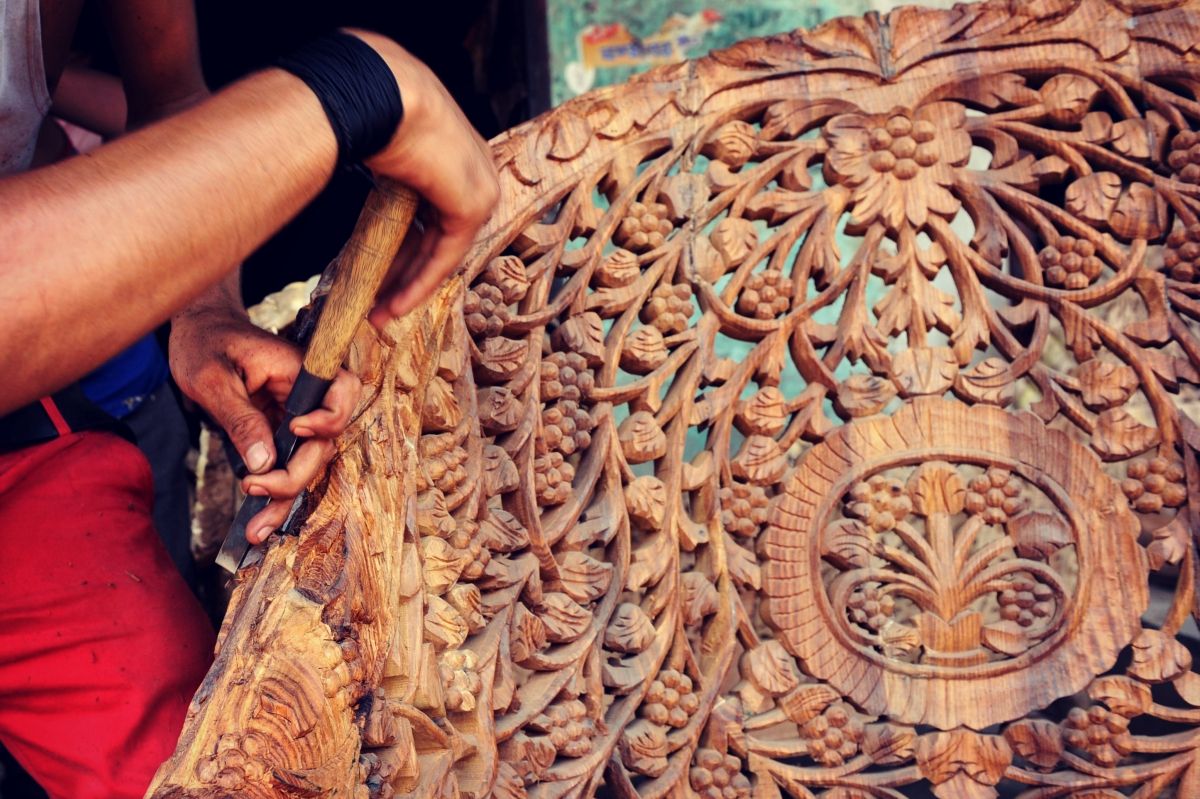
Wood carving is one of the oldest forms of art from the Stone Age and because of its durability, availability and plasticity it has remained common art form to every culture since then. Art of wood carving includes sculpture in wood, from the decorative bas-relief on small objects to life-size figures in the round, furniture, and architectural decorations. The woods used for carving vary in hardness and grain. Different types of woods are used for carving according to availability in the region, the most widely used type of woods include mango, deodar pine, pear, walnut, willow, sandalwood, oak, and ebony. Wooden handicrafts from India are famous all over the world for their beauty and durability and wood carving in India has been around since ancient times, started as a temple art and as a means to decorate palaces. Various centres of wood carving emerged over the time with its distinct style and patterns Kashmir is the most famous of all.
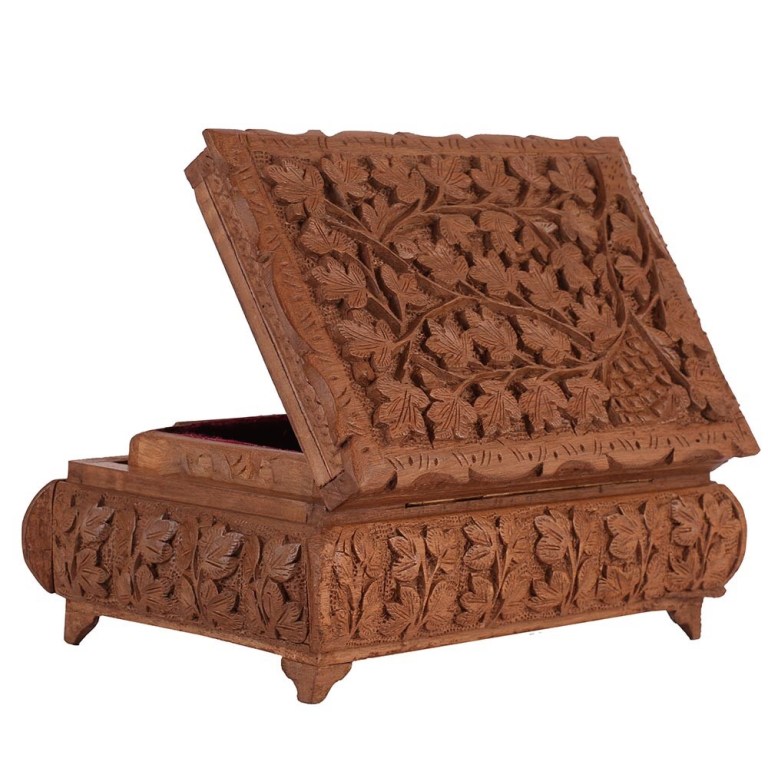
The wood used for the fine woodcarving is obtained from a walnut tree known as ‘Doon Kul’ that is cut only once it matures to an age of 300 years. Carved walnut wood-work is among the most important crafts of Kashmir. Wood of walnut tree is extremely hard and durable, its close grain and even texture allows artisans to create fine and detailed work. Walnut trees are of four types- ‘Vont Dun’, ‘Dunu’, ‘Kakazi’ and ‘Khanak’. The wooden planks obtained from these trees are added up and piled upon each other with a layer of a gap between each for passage of air which helps in the process of seasoning. It also creates visually appealing effects with even meagre plain polished surfaces. The Kashmir craftsman, however, rejoices in carving intricate and varied designs. A variety of carved products bear repeated motifs of the rose, lotus, iris, bunches of grapes, pears and chinar leaves. Dragon motifs and patterns taken from kani and embroidered shawls are also found in wood with deep relief carving. Decorative wood panels for ceilings, arches and doorwaysis one of the special craft of Kashmir and which is called Khatamband. Several other products such as toys, bowls, platters, jewellery boxes, wall plaques and table lamps, bedsteads and larger items of furniture with intricate details are also a speciality of this region.Four main types of carving are usually practised in Kashmir that include raised, engraved, undercut and plain. The carving of furniture and smaller items is an elaborate process and involves high degree of skill and craftsmanship. These intricate detailed carvings on wood are totally done by hands with the help of small indigenous tools and it definitely takes a lot of patience and precision. The master carver, popularly known as naqqash, starts by etching basic patterns on the wood and then uses delicate chisels and a wooden mallet to enhance the design profoundly to make it emerge as an embossed surface. The carvings that are done on assembles of furniture and delicate items is a very sophisticated and elaborate process that requires the ultimate set of skills and traditional craftsmanship. A kharkhana or workshop is headed by an ustad or master and those who work alongside him are called karigars.